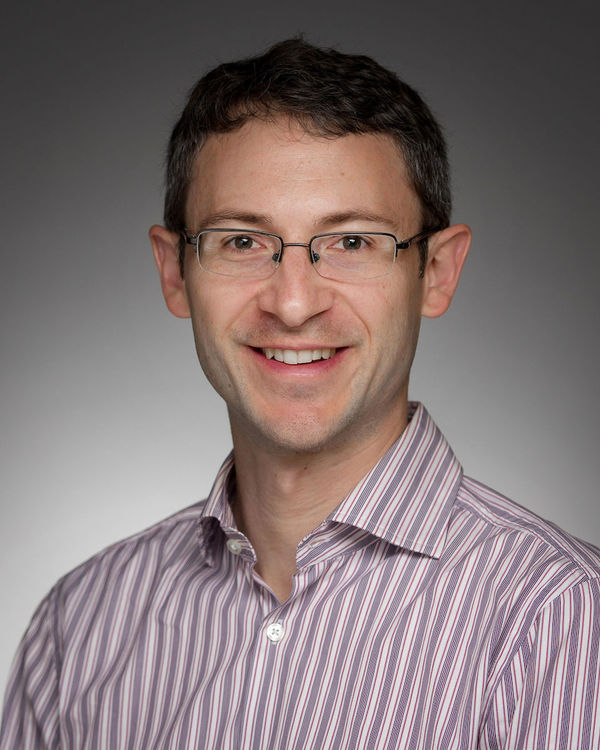
Your research focuses understanding interactions between terrestrial ecosystems and climate. Can you give us an overview of the major projects you are currently working on?
I am interested in a wide range of terrestrial ecosystems and how they will respond to climate change. (1) Many tropical forests are expected to get much drier over the next 100 years. To understand how the trees will respond to drier conditions, we are carrying out an experimental drought in Costa Rica and using measurements to improve our capacity to understand and predict how tropical ecosystems will respond to drought. (2) At higher latitudes, as in the U.S. and Canada, warmer temperatures are affecting terrestrial ecosystems. While warmer temperatures can increase the length of the growing season, they also can result in greater water stress. We are analyzing how these competing factors are affecting the growth and death of trees, and the net implications for ecosystem carbon balances. (3) In an interdisciplinary project, we are studying how deforestation of Amazonia is affecting both vegetation and climate. This project brings together ecology, atmospheric science, hydrology, and remote sensing.
Your first project referenced droughts. Can you say more about how you think future changes in water availability will affect forests?
Everybody knows that plants need water to grow. But nobody knows exactly how future droughts will affect the ability of trees throughout the world to survive. Furthermore, it is unclear whether future changes in water availability will permit forests to continue to act as carbon sinks. My research group is bringing together different strands of empirical evidence to develop quantitative models linking water, vegetation, and ecosystem carbon budgets. This work is particularly relevant for tropical dry forests. These forests are generally already dry – perhaps at the threshold of survival – and are expected to become drier under climate change. In this project, we have identified certain key plant hydraulic traits that can explain the observed diversity of plant responses to seasonal and inter-annual water stress in these forests. In Costa Rican forests, we are now carrying out experimental manipulations that prevent rainfall from reaching the soil. This experiment is designed to allow us to experimentally induce a drought and measure the drought’s effects on trees and the ecosystem. We will use these measurements to build better predictive models that link water availability, forests, and ecosystem carbon storage.
Now that you are at Notre Dame, what opportunities do you see for interdisciplinary intersections with your work?
The possibilities for interdisciplinary collaboration at Notre Dame are tremendous and are highly relevant to my work. In CEEES, Melissa Berke brings a paleoclimate perspective to the study of climate-vegetation interactions. Her experimental and measurement work has strong synergies with the modeling work being done by my group. I also very much am looking forward to working with hydrologists and atmospheric scientists including Alan Hamlet, Diogo Bolster, and Ashish Sharma. There is also work being done in ACMS that can complement and help inform the mathematical modeling being done by my group. In particular, we have a large area of common ground associated with our mutual interests in partial differential equations, linking models to data, and stochastic modeling. Finally, I am very excited about the work being done by ECI to facilitate all of these types of connections.
What projects/research do you hope to accomplish in the future?
I am interested in the factors that will ultimately constrain ecosystem productivity in the face of climate change. First, I seek to continue investigations of how droughts and water limitation impact ecosystem productivity. The formulation that we are developing is general, and can be tested in many terrestrial ecosystems, including those in Indiana and the Upper Midwest. Second, I am interested in whether increases in atmospheric carbon dioxide will lead to a “fertilization effect” for terrestrial ecosystems. One factor that may limit the carbon dioxide fertilization effect is nutrient limitation. I am now conducting joint modeling and experimental work that testing the response of tropical forests to nutrient additions. In the future, I would be excited to collaborate with others here at Notre Dame to assess nutrient limitation in other potentially vulnerable ecosystems, such as those in the Arctic. Finally, I am interested in the potential of arctic ecosystems to act as a sink for methane, a potent greenhouse gas. Recent observations suggest that soil microbes in dry areas of the Arctic may be drawing down atmospheric methane, but there are basic aspects of this process that are poorly understood. By combining model and additional measurements, it will be possible to ascertain the importance of this arctic methane sink for atmospheric methane concentrations and their impact on climate.
Originally published by Alex Gumm at environmentalchange.nd.edu on September 23, 2016.